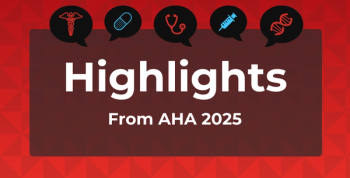
Ensuring a Path of Success for Drug Repurposing in PAH
Among the viewpoints offered by the authors to overcome barriers in solving unmet needs in pulmonary arterial hypertension (PAH) are preclinical pipelines for drug repurposing, working around challenges in early-stage trial design, and refining target selection and demonstration of engagement.
Drug repurposing has found notable success for
To set the stage, the
Among the viewpoints offered by the group are preclinical pipelines for drug repurposing, working around challenges in early-stage trial design, and refining target selection and demonstration of engagement.
Preclinical approaches to screening for drug repurposing
Targeted and high-throughput drug screens should both be leveraged to identify potentially repurposable drugs. The researchers note that targeted screening approaches that use drugs known to target the underlying pathophysiology remain the drug discovery model for the condition but add that leveraging high throughput approaches using different physiological readouts to perform large drug screens for identifying potential compounds for PAH.
Future studies using precision-cut lung sections (PCLS) and organ-chips for drug screens should be explored. Research has shown that PCLS was able to demonstrate that tyrosine kinase inhibitors imatinib and nilotinib promote vasodilation in preconstricted vessels and that substance P promotes pulmonary vascular remodelling. Meanwhile, organs on a chip have shown promise in other conditions to recapitulate the structure, environment, and physiology of human organs, which could prove useful in PAH.
Using artificial intelligence could expand the drug pipeline and define novel patient clusters that may enable precision medicine. A recent network-based analysis of over 900 FDA-approved drugs helped researchers identify multiple drug-disease networks and revealed that carbamazepine is associated with increased risk of coronary artery disease while hydroxychloroquine decreases coronary artery disease risk.
Challenges with early-stage trial design for PAH
“The success rates of therapies in general drug discovery are modest when measured by the metric of successful licensing,” wrote the researchers. “Even for repurposed therapies, entering the drug pipeline at phase 2, only around a third will make it through to phase 3 and few of these will end up licensed in the clinic.”
The researchers highlighted the challenge with trial design in PAH due to the heterogenous nature of its underlying etiologies, with them touting individual patient biological analysis as a potentially useful way to mitigate the challenge. According to the researchers, this type of analysis allows for each patient to be their own control.
Target selection and demonstration of engagement
Development of novel endpoints. In their paper, the researchers urge for validated endpoints that specifically quantify the important biological aspects of the disease that are relevant to specific drug mechanisms, including proliferation and inflammation. The need for this, they say, stems from a gap between target engagement and efficacy demonstration.
Continuing research on the usefulness of biological specimens. In the case that a direct imaging assessment is not feasible, has unacceptable signal to noise ratio, or cannot be adequately validated, the researchers advise there be robust work undertaken to confirm that surrogate measures using biological specimens that assay pathways of interest can be used sufficiently as substitutes.
Reference
Toshner M, Spiekerkoetter E, Bogaard H, Hansmann G, Nikkho S, Prins K. Repurposing of medications for pulmonary arterial hypertension. Pulm Circ.2020; 10(4) 1–12.
Newsletter
Stay ahead of policy, cost, and value—subscribe to AJMC for expert insights at the intersection of clinical care and health economics.









































